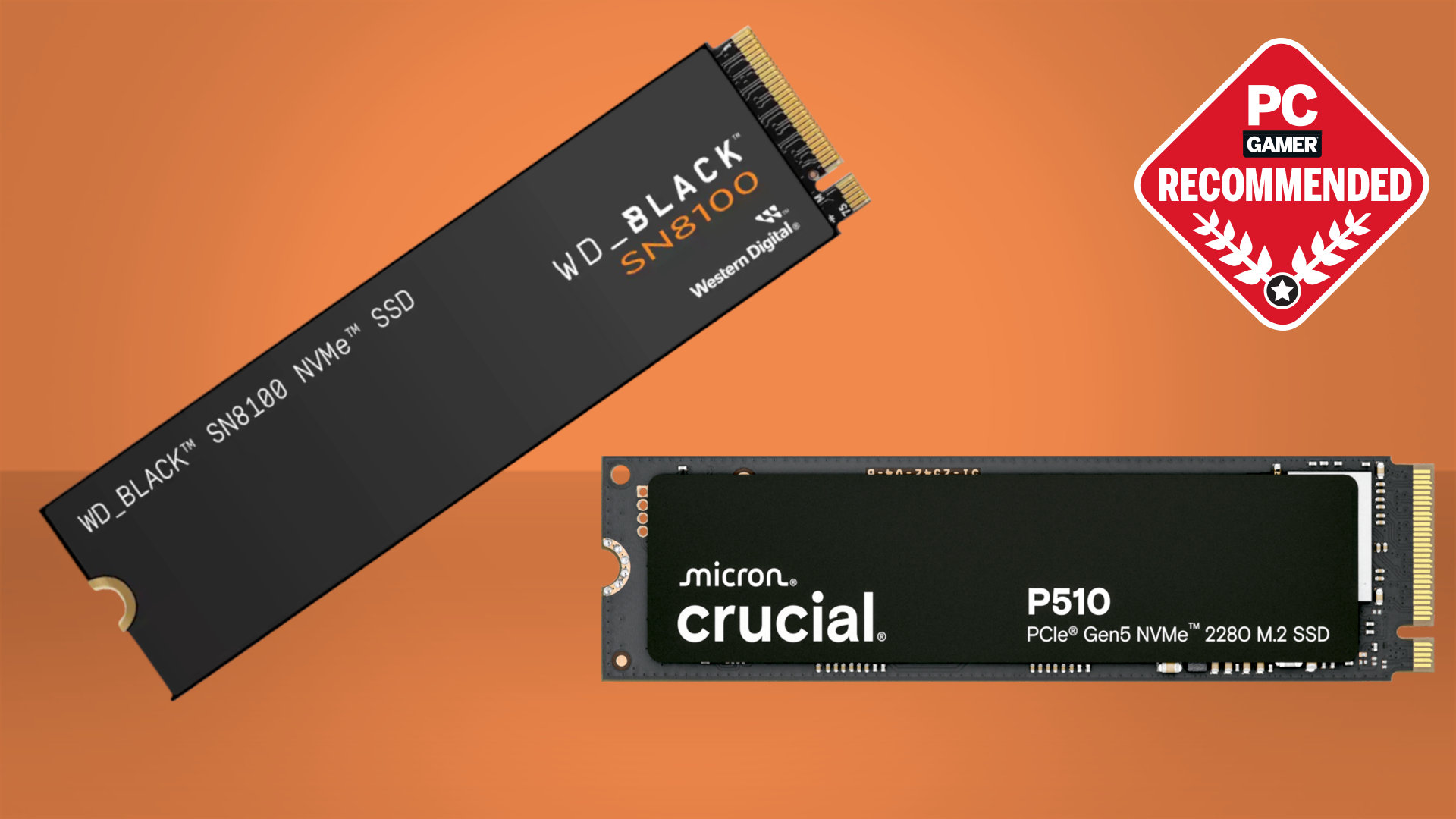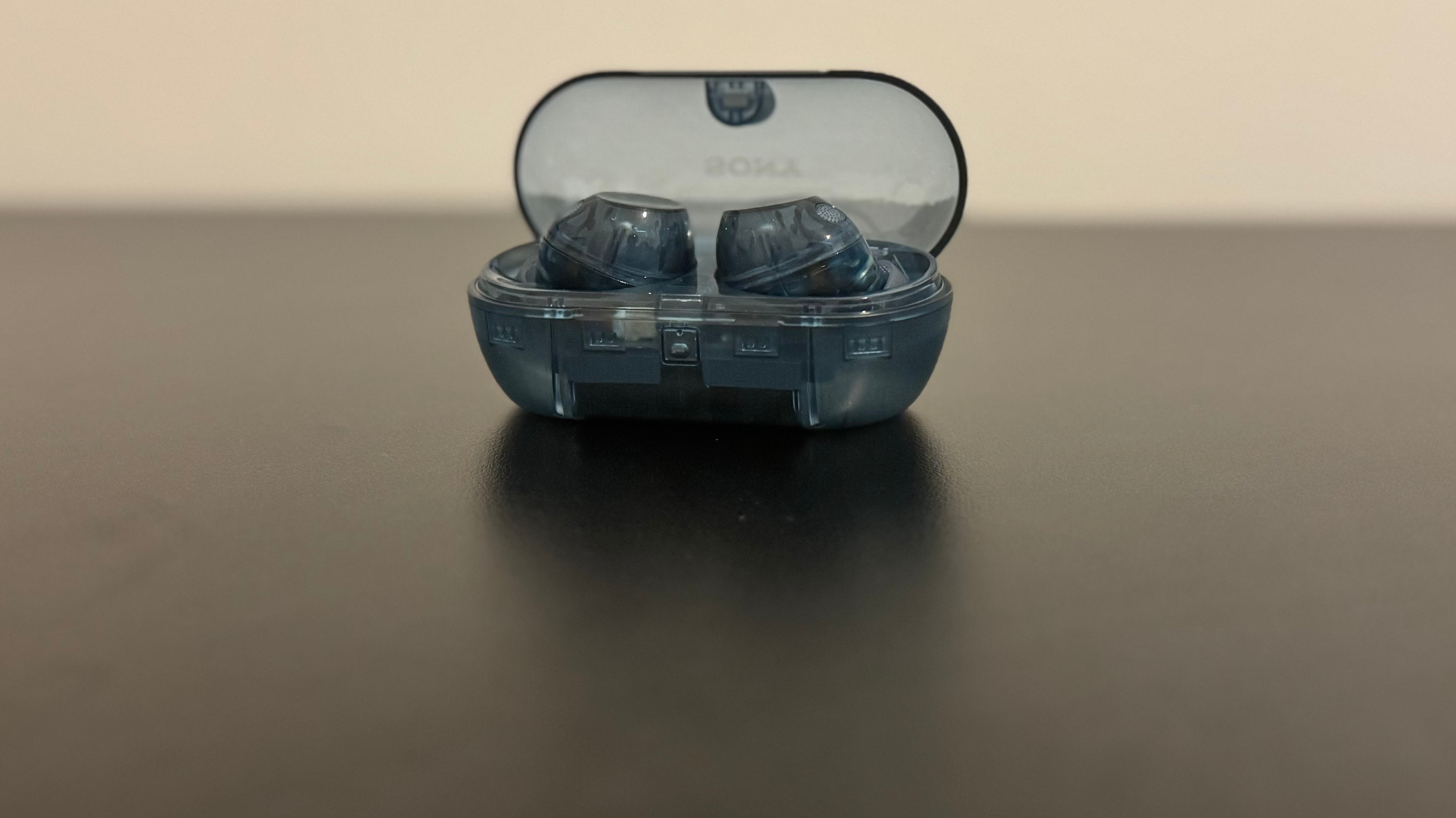George Fan and his cat on the making of Plants vs. Zombies
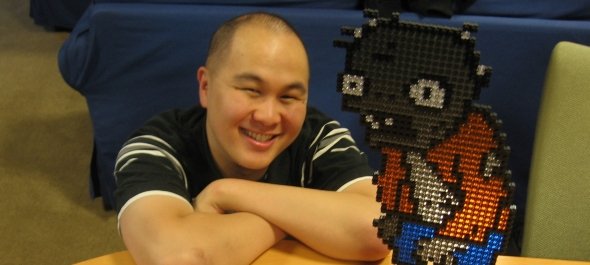
PopCap Games are the creators of Bejeweled, Peggle and Plants vs. Zombies, each of them one of the biggest and most lovable games on PC. When casual and social games are reaching ever larger audiences and their developers are getting a bad reputation for poor design practices, how have PopCap managed to find fans amongst gamers and grannies alike? To find out, I visited the studio and interviewed everyone I could find. We're running those interviews each day this week and calling it PopCap Week .
Today I'm speaking to George Fan, the designer of Plants vs. Zombies. Alongside a ton of incredibly early sketches from the game's development, George talks about his time working for Blizzard and PopCap simultaneously , PvZ's origins as a double-decker fish tank, and why he dressed as a zombie for the director of Dawn of the Dead. Also, a few words from his cat.

PC Gamer: How did you join PopCap?
George Fan: A long, long time ago I had this prototype for a Java game about a fish tank where aliens attack it. It ended up turning into Insaniquarium. My ambitions were simple, I just wanted to enter it into the Independent Games Festival, and that was 2002. At the time I was working at an online games company, and as part of my job I felt I had to do research on competing companies. I stumbled upon PopCap and thought, “These games are all really good.” I think back then they had Bejeweled, Money Maze and Seven Seas. So I sent an email telling them, "Hey, great job on those games." I think John Vechey rang me back. So when I heard that my Insaniquarium prototype had gotten into the Independent Games Festival finals I rang them up again and asked if they would be at GDC. We met up there and found that we have similar ideals, and they [offered to] help me make Insaniquarium as a downloadable game. I agreed and we worked together on that for what ended up being a couple of years.
PC Gamer: Did they hire you at that point?
George Fan: They didn't hire me at that point. At the time, I was looking for a job and I also got an offer from Blizzard. I was ecstatic, as I had been a Blizzard fan my whole life, and I got offers from both Blizzard and PopCap. I'm from the Bay Area in California, so that was one factor that ultimately let me make the choice to go to Blizzard.
PC Gamer: So how did you then end up going up from that and PopCap to working at Blizzard?
Keep up to date with the most important stories and the best deals, as picked by the PC Gamer team.
George Fan: That was a really tough transition. Normally when you work in a job they're not really keen on having you work on other projects for other companies, so I was really concerned that if I worked at Blizzard I'd have to stop working on Insaniquarium. But they made an exception, based on precedent, they said, 'Because you were working on this before we'll give you the leeway to finish it up.' But knowing that I wasn't going to work on anything else afterwards. And that was actually a pretty horrible thing to try to attempt. I don't suggest that anyone works a job programming during the day and going home and programming some more during the night. It's just too much using the same part of the brain, and the same part of the wrists. My wrists got really, really messed up that year, so I'm glad I've made it through and released Insaniquarium, but I don't think anyone should do it that way.
PC Gamer: How long was the period of overlap where you were working at Blizzard and doing Insaniquarium at the same time?
George Fan: I was working at Blizzard for around two and a half years, so I think from somewhere around 2002 to 2004. Insaniquarium was released in 2004 and it wasn't that long after I'd finished, when I was only allowed to work at Blizzard, that I discovered that I was more of a designer than a programmer. There are a lot of talented programmers at Blizzard and I just didn't feel like I could keep up with them in that realm. I tried to get into designing when I was over there and it was tough. I think I have a good design sense, but sometimes it's pretty tough for me to communicate design ideas. Or rather, I can communicate them, it's just hard to persuade people why they're good. I found that working in a smaller team was a better fit for me, and had all these games inside of me that I wanted to make and I don't think Blizzard was the place to do that. I kind of have these original little Insaniquarium style experements that I want to do. So I ended up leaving Blizzard to go independent for a while. There was at least a year where I was totally independent and working on what ended up being Plants vs. Zombies.
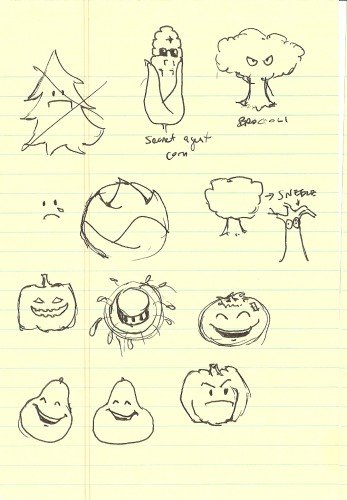
PC Gamer: So what was it exactly that brought you back to PopCap?
George Fan: When I left Blizzard I hadn't gotten an offer from PopCap. I really liked the idea of doing the same thing I did for Insaniquarium, which was an independent company making a game. One of the things that changed was that PopCap had opened up a studio in San Francisco and so the question came around again of whether I wanted to work for them. It was a tough decision for me because there was a big part of me that wanted to stay independent and work on games that way.
Cat: Meeaaaaow.
PC Gamer: What convinced you to then join PopCap?
George Fan: They made me a really good offer and convinced me that doing Plants vs. Zombies as an employee would help me make the best game.
PC Gamer: What about being internal makes Plants vs. Zombies a better game?
George Fan: You get a lot of support, and I think that one thing I would worry about as an independent is if I would be consistently motivated enough. That's a key factor. When you're independent, you're your only motivator a lot of the time. I was a little concerned about being sidetracked or letting things take longer than they should, procrastinating at times when I don't feel inspiration. Also, PopCap have this internal forum where we put builds occasionally and everyone comments on them. I think they might have shown you it when you were up there?
PC Gamer: No, they didn't show me that.
George Fan: Yeah, they have a forum called Burrito where people post internal builds. I think it's really useful because everyone in the company can play and-
Cat: Meaoww!
George Fan: I've got to feed my cat, he's yelling at me. Yeah, we did builds for Plants vs. Zombies every four months maybe, and they always got a lot of good commentary and feedback on every single build, and that allowed us to really pick and choose which things we wanted to address.
PC Gamer: How did development on Plants vs. Zombies begin?
George Fan: I was a big fan of the DS when it first came out, and there was a quick talk between me and Jason about [making] Insaniquarium DS. That was fresh in my mind and kind of led me to think of what I would do for a sequel. I'm not the type who just wants to do the same game again, so for Insaniquarium 2 I was thinking about the dual screens. I was thinking that it would be, instead of a one fish tank game, it would be twice the fish tank. It would have two fish tanks, right? The concept was that these fish tanks were going to stack on top of each other. I don't know why that makes sense. The aliens would enter the top fish tank. They would come in hordes and would attack your top fish tank and if they broke through that, they would get to your bottom fish tank. When they ate all your fish in the bottom fish tank the game would be over. The top fish tank was going to be more focused on having defensive fish and depth charges and whatnot, and was basically going to be a defence tank. The bottom tank was going to be more like Insaniquarium 1; it was going to be the resource generator tank. That was the initial idea.
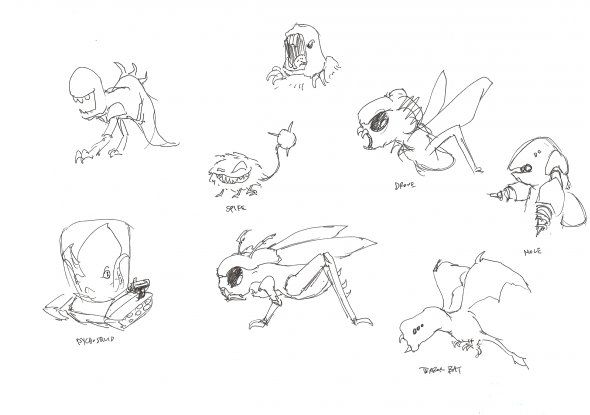
PC Gamer: When did the game make the shift from fish to plants and zombies?
George Fan: It first made the shift to plants when it was all ideas in my head and early prototypes. I was playing WarCraft 3 and really getting into all the custom games that were coming out. One really big mod was tower defence, back when tower defence wasn't as ubiquitous as it is now. I was playing all these tower defence games I can't remember the names of now, and I realised you could make a tower defence game. I was thinking about defensive elements and I was thinking if you had plants as towers they could be expected to stay in one place, and you could draw faces on them and give them a lot more character, whereas every tower in a tower defence game has zero personality. That was the first step of what led to Plants vs. Zombies.
The second step was born of me not wanting to make a game that blended in with everything else. I started working on this plant defence game, and then all these games started coming out in the casual games space about gardening, planting plants and greenhouses. I felt like my game wouldn't stand out enough, so that's when my adversary changed from aliens to zombies. They were aliens because they were the same aliens that were originally from Insaniquarium, but they decided instead that they wanted to eat veggies instead of fish. But at that point I was like, "Okay, we're safe now," because no one is going to make a plant game with zombies in it.
Before that, plants had the number one billing; it wasn't Plants vs. Aliens, it was called Weedlings. From that day on it was a game that gave the bad guys equal billing, or equal importance. But then the funny thing that happened was Tower Defence totally took off. Unfortunately when the game came out it was just dismissed as-- when people told other people about it it was just, "Oh, it's a tower defence game." In a way it is, but I think it brings a lot more than just being another tower defence game, I think.
PC Gamer: So you didn't start with the genre and work out from there?
George Fan: No, no. It was never meant to be a tower defence game, it was meant to be Plants vs Zombies.
PC Gamer: I know you do your own character designs, so does it start with a sketchbook?
George Fan: I did the sketchbook and prototyping concurrently. I think that's the best way to make games, creating the art and gameplay together. Nothing should let the gameplay bend to it. One of the draws with Plants vs. Zombies, definitely the goal I try to shoot for, is that the art would support the gameplay. For instance, the peashooter plant looks like something that would spit projectiles out. Ideally someone who doesn't even know English could play the game, because it would just be so reinforced by the visuals.
So, yeah, I did start out with a sketchbook, just sketching plants and, back then it was aliens, and whenever I would be programming, I would open up that sketchbook. The sense of style was set in stone then, but I kind of drew it all with the intention of having it replaced later by an artist who could really render out, and make the lines clean.
PC Gamer: Were there any paths you started down but that didn't work out?
[Continue to page two for more on how plants came to fight zombies!]
